There’s no doubt that social media can be a great resource for finding things to do in Hawaii. But there’s a negative side too. It can also contribute to behavior that is dangerous or even deadly. This is all coming to light as international news swooped in to amplify last week’s report on the drowning at Electric Beach.
Was this Hawaii visitor’s death related to social media?
Countless incidents, at least in part related to social media, have plagued Hawaii, including near deaths, trespassing, emergency rescues, and more. On Instagram, we see where others have gone and what they’ve experienced, but we don’t necessarily understand the risks.
For example, the beach where the latest Hawaii snorkeling drowning victim died is widely loved and promoted on social media, including Instagram and Facebook. But it has a dangerous side too.
Prior drownings at Electric Beach point to problems.
One of the issues at Electric Beach (Kahe Point) is that it has no permanent lifeguard station. Another issue at Electric Beach is its popularity among visitors that came with the rise of social media. And lastly, conditions there can be dangerous.
Incomplete information on social media rarely speaks to the hazards and safety issues encountered. What visitors don’t see are prior Electric Beach news headlines like these: “Soldier Resuscitates Man After Drowning at Electric Beach,” “Woman In Critical Condition After Nearly Drowning at Electric Beach,” and then “Snorkeler Dies After Electric Beach Drowning.”
Due to this tragedy, the City of Honolulu may prioritize having a lifeguard station at Electric Beach later this year. Honolulu currently has more than 40 lifeguard-stationed beaches. In the meantime, lifeguards sometimes patrol there, which is not enough.
Electric Beach is a unique environment. Warm water enters the ocean from large cooling pipes from the power plant. That brings enormous wildlife to the area, including turtles, tropical fish, rays, and sometimes dolphins. At the same time, dangerous currents are frequent in the area. And for that reason, it is not considered a good place for beginners.
Encouragement of dangerous activity is seen in photos.
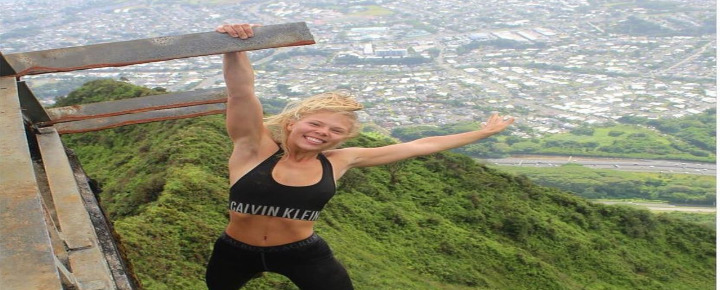

Are there any doubts that dangerous behavior in Hawaii can be encouraged by social media? That includes hazardous selfies like the one above, as people share their adventures with followers, family, and friends.
Hawaii is without a doubt among the world’s most Instagrammable places.
And clearly, visitors flock to places in Hawaii, seeking out adventure and unique opportunities. What happens, however, is that visitors see idealized imagery that encourages thrill-seeking and visiting places that good sense might have deterred.
For those relying on social media as their Hawaii travel guide, the potential hazards of such places are not apparent. There can also be the sense that if those people snorkeled there and it looked so incredible and problem-free, why should I worry? And the desire for friends’ comments and other accolades can also lead to a diminished sense of self-protection.
Hawaii visitors, please exercise caution!
We sincerely hope that out of this tragedy, some better sense of exercising appropriate caution and becoming more familiar with Hawaii’s environment and safety issues will result.
When Stephen Phan, age 49, drowned on June 1 at Electric Beach, no lifeguard was present. Those at the beach assisted with lifesaving efforts until first responders arrived. Sadly, the couple’s belongings and rental car were stolen in a virtually unheard-of Hawaii event.
A GoFundMe page has been set up for Stephen’s family. The page said, “We are all shocked, in disbelief, and heartbroken at the loss of such a great man as Steven.”
Our condolences to the family. May Stephen’s memory be a blessing.
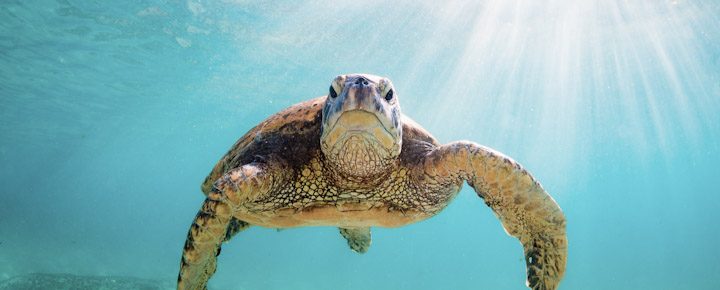
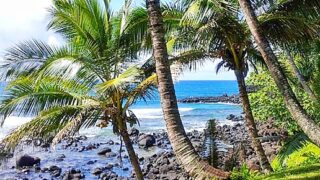

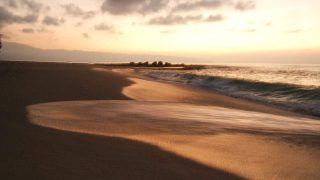
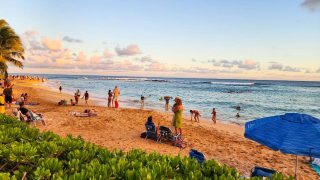

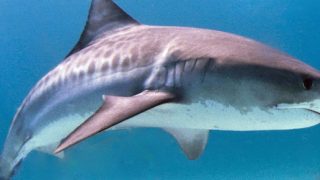
Hi!
Hope you’re both well…this is the first BOH I’ve rec’d in several months.
Thought you might be on an extended vacation.
Glad you’re back.
Lynn
Hi Lynn.
Thanks for touching base. BOH publishes daily with only rare exceptions. We don’t know what the issue night be if you aren’t getting our emails. Let us know if we can help.
Aloha.
Stealing of beachgoers’ belongings is not “a virtually unheard-of Hawaii event.”
Purses, backpacks, and carry bags (sometimes with your keys or wallet inside) are regularly snatched off your blanket while you are in the water.
Never leave anything unattended unless you desire to lose it.
Theft has been on the uprise in Hawai`i.
I am surprised at Electric beach being so dangerous. That was our family beach when we lived in Makakilo. My Dad worked for Hawaiian Electric at Kahe point in the 1970’s. We swam there often with no problems. There were picnic tables and we would bring our lunch or dinner there. The last time is went to Electric beach was in 2019 and it was all gone no picnic tables or anything just beach. Whether that’s good or bad depends on your prospective. The ocean has to be respected no matter if you are in Hawaii, Florida, Maine or anywhere.
There is no demonstrated correlation between social media and drownings in Hawaii. In fact, since 2001, the incidence of drownings in HI (reported by the Hawaii Department of Health as number of drownings per 100,000 population), has remained the same. Not what one would expect if the explosion of social media over the past decade were in any way contributing to the problem.
Want to know what two variables actually Do correlate with drowning rates in HI (according to the DOH)? 1. Male sex (five times higher than females) and Native Hawaiian / Pacific Islander ethnicity (eleven times higher than other ethnic groups).
It makes more sense to target males and Native Hawaiians with water safety programs, and leave the Instagramers alone.
It seems to me that somehow, in some way, those that promote dangerous behavior should be held accountable for the damages (including death) that (at least in part) happen.
It simply makes sense that promoting dangerous behavior via social media should be somehow, accountable. Of course, it is a long way to say that a photo, posted by someone showing that person engaging in dangerous behavior, is a factor in someone else doing the same thing and getting hurt or dead from it. Something seems wrong there.
Hi guys ,Justin’s experience at electric beach should be posted on a sign on the beach saying “warning -read this “ I think the only totally safe beach in the state of hawaii is the beach in front of the Royal Hawaiian , it’s about a foot deep, no current , and no rocks to smash your toes on. Ok , kind of joking but not too much as Any other beach in Waikiki may have sharp rocks ( warning sights posted for those) or just occasional rocks but you can surely hurt your foot or toes if you aren’t aware , or strong enough shore break ( depending on the season and ocean conditions) to break your ankle or worse going in or out of the ocean . A little talk with the lifeguard before entering the water is a good idea for newcomers.
There is quite a bit of conversation and concern about the full face snorkeling masks. It sounds like there is not an adequate air circulation leading to a CO2 build-up which may result in drownings. Perhaps these masks should be removed from stores or at least have some sort of warning stating they are dangerous.
“Encouragement of dangerous activity is seen in photos.”
Sorry, if people are going to hang by one arm over a cliff, it’s called “Natural Selection.”
No one can help them.
They are candidates for the Darwin award.
I am glad you have highlighted this trend in today’s social network. I would like to share a related element that lures visitors to unsafe activities. One of the alures to visitors is to enjoy the islands as they see locals do. I don’t want to blame locals for visitors’ accidents but I have observed dangerous behavior by locals that when imitated by visitors ends tragically. These include China Wall and Ioa Valley bridge jumping. Visitors see people jumping from these spots and want to join in the fun but do not understand the key elements. Is this the locals’ fault for enjoying the islands? Not at all but the Islands’ allure are an easy temptation for visitors to take risks they are far from prepared for. What can be done?
Hi Guys, and yet another sad drowning death at Tunnels Beach on Kauai. I believe that the uncertainty of the waves and currents are really deceiving tourists. Basically don’t go out farther than your waist on an unfamiliar beach. Even then, underwater currents can sweep you off your feet. Take care everyone 🙏
Hi Debra.
Thank you! Tunnels in summer is usually quite calm, so we’ll have to wait to see what really happened there.
Aloha.
Quite a number of social media adventure posters are young local kids. Some have YouTube channels showing secret hikes ( mostly through private property) and places like pounding Queens Bath where they have the experience and confidence to play but few others should. They and their parents should think about this
One more thought….so getting things ripped off on Oahu is almost unheard of ????
We live near Electric Beach. The rip current there is no joke. It pulled me and my buddy .33 miles out one time and we had to fight it to get back in. On top of that, the current was pushing us south, right towards the rocks….and it was smashing into the rocks.
In short, unless you are very experienced, have a buddy and know the current at Electric Beach, don’t get in the water. People get hurt, and sometimes killed there, on the regular.
Also if you’re a tourist you are just asking for your car to get liberated of your items at Electric Beach. We are there often….and so is HPD, usually taking a report because someone’s window was smashed and their stuff has walked off.
If people are so dumb that they believe everything that they see/hear on social media about a certain location and then copy actions that others have done, then they can’t be helped. No one is responsible for protecting people from themselves!
Well, I will say this one time. Social Media has ruined the Hawaiian Islands and many other travel destinations. I see posts where people can not even make one decision without asking social media where they should eat, or if they should go in the ocean if they can not swim! I have never seen such proof of dumbing down of the world citizens. I love Beat Of Hawaii because I get real news, reviews from a great source here. It’s a darn shame that beaches have to be peppered with Life Guard Stations now. I would love to enjoy a beach like the ole days without it having beach chairs/umbrellas from the neighboring resort and life guard stations towering over the nice views. I know this is not realistic in this day, but…
Hi Sandi.
Thank you.
Aloha.